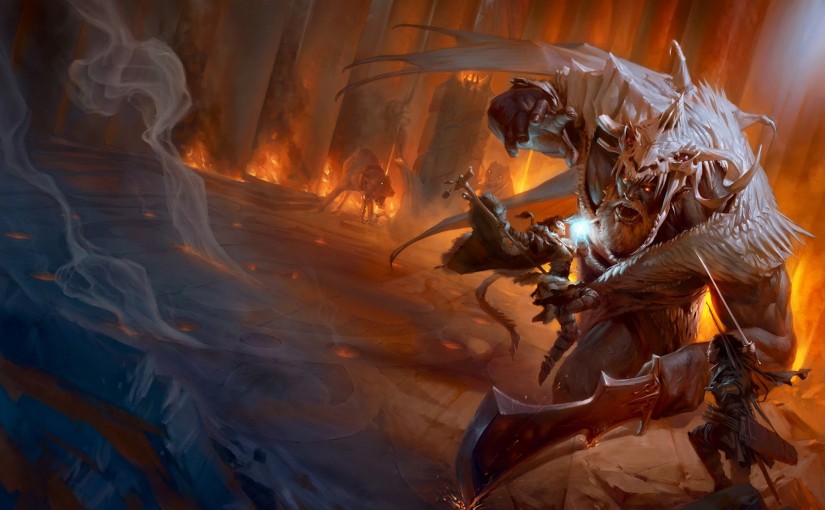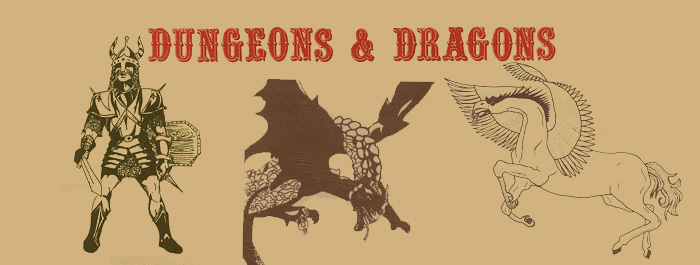written by Ian Hertzberg
This article is going to be talking about pen & paper role-playing games such as D&D. If that all sounds like a load of jargon to you might I suggest taking a look at one of my previous articles: D&D and Modern Game Design.
If this isn’t your first time rolling a D20 or any other kind of funny shaped dice then you’ll fit right in.
So, you want to get experience in narration or design or maybe narrative design but, like me, you’re not a computer whiz who has a decent command over programming languages like C# or Java Script. Well, you’ll probably have to deal with those things someday, but it doesn’t have to be now. In fact thanks to pen & paper role-playing games you can actually start designing right now.
For this article, in particular, I’m going to be using Dungeons & Dragons or D&D as an example, but this applies to any and all pen and paper role-playing games. I’ve just picked D&D for this example because it is what I’m most familiar with and because there is a free lite version of the rules that you can download and use by clicking on this link. The Basic Player’s Handbook and the Basic DM’s Handbook should have downloadables at the bottom of the page.
Okay so you have the rules, but now what? Well reading the Player Handbook and DM Handbook both is a good start. You don’t need to read them cover to cover, although you should read both in their entirety later down the road. For now start by getting a feeling for how the game is run, the introduction section of the player handbook is a great place to start as it acts as an overview as to what D&D is. You’ll also want to keep these on hand when you play to consult the rules.
(Sidenote: I almost forgot, but you’ll need to pick up various polyhedral dice: a d6, d8, d10, d12, and a d20. You can get these at a local game store or download one of the free dice apps on either the android or ios app stores)
Okay, so now that you’ve looked over both handbooks maybe you’re starting to see how this could lead to learning about narrative and design. Dungeons and Dragons is a series of systems you can use to create not just a story, but an experience that is realistic in the fact that it simulates a universe governed by various laws and properties not too dissimilar from our own and allows players to interact with that universe in any way they see fit. Open world sandbox games attempt to do the same thing. So in essence, DM-ing a Dungeons & Dragons Game is like being the designer of your own open world sandbox game. Neat, right!?
As a DM you’ll be the judge of the rules as well as create the games: setting, non-player characters, determine loot, create combat encounters, traps, puzzles, ect. Most of those fall under aspects of game design. So, what I would encourage you to do, starting out, is focus on the aspects of design that interest you the most the ones you are really good at working with.
What do I mean by that? Well, I mean focus (initially) on the elements in games that you love the most. I’m a fan of narrative, so I’d make a narrative-heavy adventure with a grand over-arching plot, a cast of colorful characters, vibrant locals, and maybe some romance for good measure. You, on the other hand, might really love games like Dark Souls with really tight level design and grueling, but not impossible combat encounters. So, you’d then focus on creating an adventure with plenty of traps and difficult encounters with monsters using grid paper and battle mats to map out the exact positioning of each monster and trap. And if you’re the kind of person that likes to design mechanics over experience then try and change the rules a little bit or create a new class. Playtest them with friends and try and figure out what’s fun and what’s broken.
Remember, this is just where you start, you’ll want to work on all aspect of design in a campaign as you will have to work with all of these aspects and make them work together in a cohesive manner in order to create a truly great experience. And don’t feel bad if you’re lacking in one area or another; we all have our strengths and weaknesses. That’s why there are often multiple designers working on a game and why dev teams have the various leads that they do. Focus on just becoming proficient in all aspects of design, not perfect, practice makes that, or so I’m told.
Thanks for reading the article. I hope this inspires you to try playing pen & paper role-playing games and use them as a tool for learning game design while also having fun. If you’re having trouble making a campaign or just want to know more about D&D and how you create and run games I’ll post a few resources below that’ll be able to help you out.
As always leave your thought and opinions in the comments.
Resources:
Dungeons & Dragons Official Website







